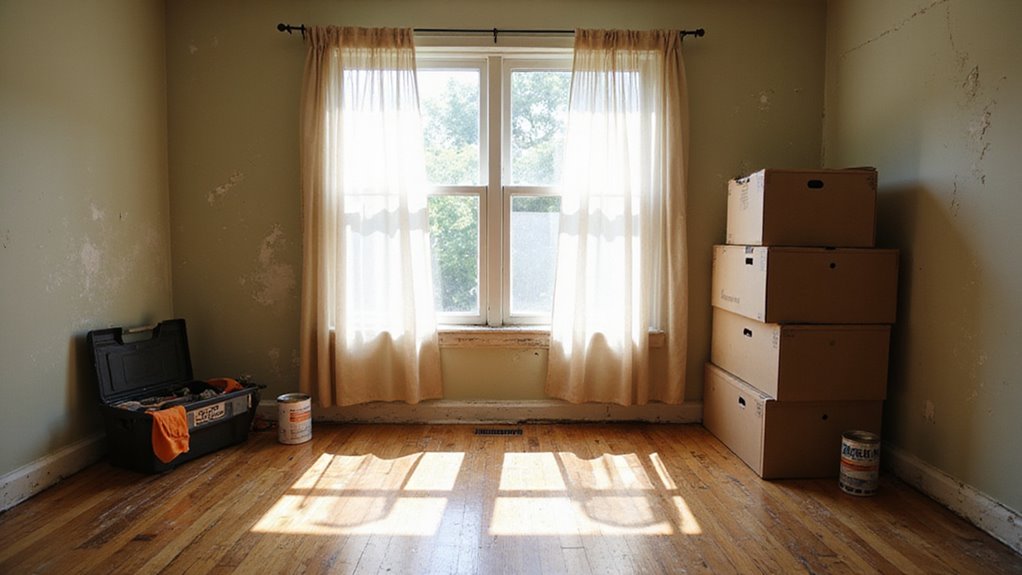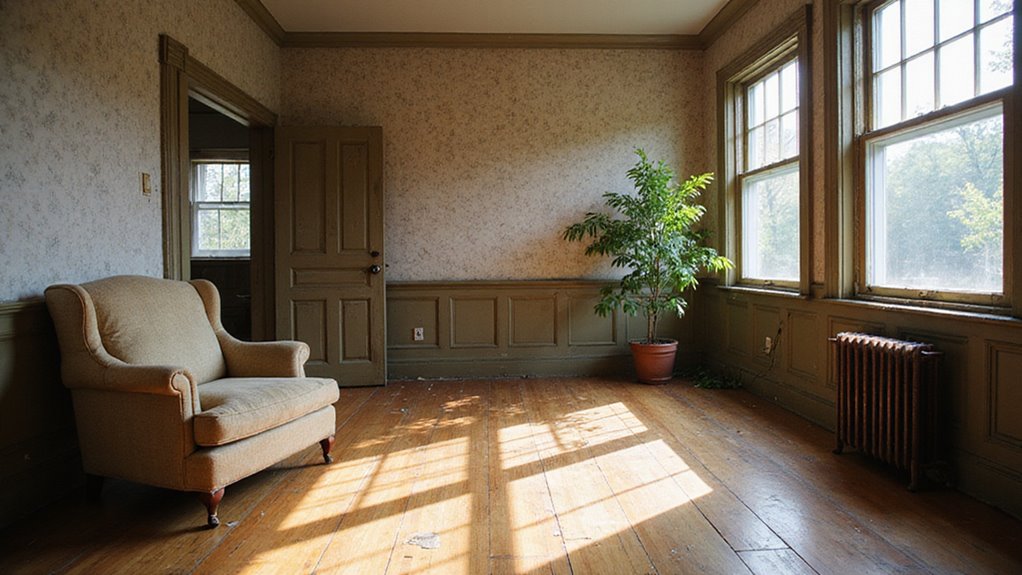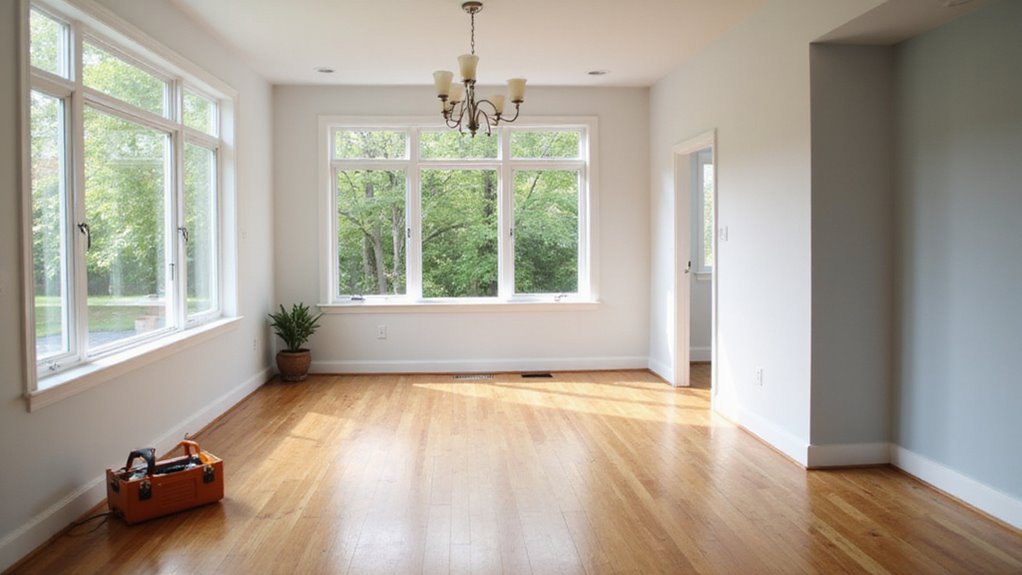You want to sell your house, but you face a tough choice. Should you sell your home as-is or fix it up first? Making the right decision can affect how much money and time you gain or lose.
This decision is stressful because both options have risks. Repairs can cost a lot and delay your sale. Selling as-is may mean accepting lower offers or scaring off buyers.
The best choice depends on your home’s condition, your timeline, and the local market. By weighing these factors, you can make a smart move. This blog will guide you step by step so you can choose with confidence.
Key Takeaways
- Selling as-is is faster and avoids upfront repair costs but usually results in a lower sale price and a smaller buyer pool.
- Making repairs can attract more buyers, speed up the sale, and increase offers, but may delay listing and involve significant expenses.
- The best approach depends on local market conditions, buyer preferences, and your need for a quick sale versus maximizing value.
- Major repairs often cost more than expected and may not guarantee a higher sale price, especially in slow or declining markets.
- Full disclosure of property issues is required by law, whether selling as-is or after repairs, to avoid legal complications.
Understanding the As-Is Home Sale

Selling a home “as-is” means you offer it in its current state. You do not promise to fix or improve anything before closing. Buyers expect to handle any repairs themselves.
Selling as-is means offering your home exactly as it stands—no repairs or upgrades promised before closing. Buyers handle all fixes.
As-is homes usually sell for 5% to 20% less than similar move-in ready homes. Pricing it correctly is important if you want a quick sale. Researching recent sales helps set a fair price. Selling as-is often appeals most to cash buyers and investors who are comfortable with properties that may need work.
Simple staging, like cleaning and decluttering, can make your home more appealing. Good lighting also helps create a better impression. These small steps can attract more buyers without changing the home’s structure.
If you understand what buyers want, you can market your home better. Data-driven pricing attracts serious buyers comfortable with as-is sales. This approach can lead to a faster and smoother transaction.
It’s also important to make sure you meet Virginia’s disclosure laws, which require you to reveal any known problems like mold or water damage to avoid legal and financial risks.
Common Repairs Sellers Consider
Sellers often consider making repairs before listing a home. These repairs can help attract more buyers and better offers. Choosing the right repairs can also increase the home’s value. It’s important to know that cosmetic fixes like wall scratches or faded paint usually don’t impact the structural value or overall safety of the home.
Fresh paint, fixing drywall, and repairing leaky faucets are common choices. Simple updates like these usually give a good return on investment. If a seller ignores visible problems, buyers may offer lower prices.
Curb appeal matters for first impressions. Landscaping or a new mailbox can make the home look more inviting. If sellers want more interest, they should focus on repairs buyers notice during showings. Making sure to enhance curb appeal can create a strong first impression and help a home sell more quickly.
Pros of Selling Your Home As-Is

Selling your home as-is means you do not have to make repairs before listing. This option lets you avoid spending time and money on fixing issues. You can put your house on the market quickly. Listing your home as-is lets you skip repairs and get your property on the market faster, saving time and money.
If you need to move fast, an as-is sale is helpful. You do not have to wait for contractors or repairs to finish. This can reduce your holding costs. By working with cash buyers and investors, you can often close much faster than with traditional sales.
With the right price, your home may attract investors or buyers seeking a project. Home staging is not always required, so you save more money and effort. Industry data shows that competitively priced as-is homes often get offers within 30 days.
This method can make the selling process faster and simpler. You gain speed and convenience without investing upfront. If you want a hassle-free sale, selling as-is could be a good choice.
In many cases, selling as-is means you can expect to receive about 70-90% of the home’s appraised value, depending on the property’s condition and current market trends.
Cons of Selling Your Home As-Is
When you sell your home as-is, you’ll likely attract lower offers since buyers factor repair costs into their bids. Data shows as-is properties often sell for 5% to 20% less than comparable updated homes. You’ll also face a smaller buyer pool, as many traditional buyers prefer move-in ready options. Because foundation issues negatively influence buyer perception and raise safety concerns, buyers are more likely to view as-is homes as risky investments. Additionally, selling as-is may mean missing out on cash buyer marketplaces that can connect you directly with investors interested in quick, hassle-free purchases.
Lower Offers From Buyers
Homes sold as-is usually receive lower offers from buyers. Most buyers plan to spend money on repairs, so they offer less. These homes often sell for 5–20% less than similar, move-in-ready houses.
If you want to reduce this price gap, use smart pricing and targeted marketing. Being open about the home’s condition can help attract serious buyers. Highlight the chance for customization to make your home stand out.
Buyers often guess high on repair costs, lowering their offers. Appraisals for as-is homes can also be lower, which may affect financing. Most offers come from investors, who typically offer less than market value.
Good marketing will help, but expect a lower selling price if you list as-is. Prepare for lower offers and adjust your expectations. Consider these factors when deciding how to price and sell your home.
Limited Buyer Pool
Selling your home as-is reduces the number of interested buyers. Most buyers prefer homes that are ready to move into. If you sell as-is, you will mostly attract investors and bargain seekers.
A limited buyer pool makes it harder to negotiate a high price. Lower demand means you may have less control during negotiations. You may need to accept a lower offer to sell quickly.
Targeted marketing and careful pricing can help you find the right buyer. Investors, flippers, and bargain hunters are usually the most interested. First-time buyers and families often avoid homes that need repairs.
If you want to sell as-is, focus on realistic pricing strategies. Highlight your home’s potential in your marketing. This approach increases your chances of a successful sale.
Benefits of Making Repairs Before Listing

Making repairs before you list your home can give you a big advantage. Homes in good condition often sell faster and for more money. Well-maintained houses also attract more serious buyers. If you fix problems early, buyers may have fewer concerns during inspections. Clean and updated homes can stand out in the market. First impressions are important, and repairs help your home look its best. Making repairs can also reduce the need for negotiations, since homes with fewer issues are less likely to trigger buyer requests for credits or price reductions. You may receive more offers if your home looks cared for. Buyers are often willing to pay more for homes with fewer issues. If you address repairs, you could see a better return when you sell. By taking care of repairs early, you can avoid overpricing or undervaluing your home and set a competitive price that appeals to buyers.
Drawbacks of Investing in Repairs
When you invest in repairs, you risk running into unexpected costs that can quickly add up. Completing renovations may also delay your listing, increasing the time your property sits on the market. Even after spending money, there’s no guarantee you’ll see a strong return on your investment. Additionally, tackling repairs on a fire-damaged property may require disclosure requirements that can complicate the sales process and introduce new legal obligations. You should also consider that court approval may be necessary before finalizing any sale, adding another layer of complexity to the process.
Unexpected Repair Costs
Repair projects often cost more than you expect. Many hidden problems come up during the process, especially after inspections. Careful planning helps, but surprise expenses can strain your budget.
Homeowners often face extra costs from issues like hidden structural damage. Old wiring or pipes may need full replacement once work begins. Permit fees and code requirements can also increase your total costs.
Material and labor prices may rise after your project starts. If you want to avoid financial stress, create a contingency fund. Always check your contractor’s estimates for accuracy.
If you prepare for these unexpected costs, you can better manage your renovation budget. Careful review and extra savings will protect your finances.
Longer Time on Market
Investing in repairs can cause your home to stay on the market longer. Renovations often lead to delays in listing by several weeks. If you want a quick sale, repairs may not be the best option.
Contractor schedules and unexpected issues can slow down your timeline. More homes may appear for sale during this extra time. Increased competition could force you to lower your asking price.
Realtor.com data shows homes with major updates take 15–30 days longer to sell than as-is homes. Market conditions may change while you wait. This can affect your final sale price and overall selling experience.
Uncertain Return on Investment
Investing in repairs before selling does not always guarantee a higher return. The final sale price may not cover your renovation costs. Sellers should know that upgrades can be a financial risk.
Renovation expenses often surpass original estimates. If costs rise, you may not recover your investment. Some projects only return a small portion of what you spend.
Appraisers might not value your improvements as highly as you hope. If the appraisal is low, buyers may offer less. Market trends can also lower the impact of upgrades.
Return on investment depends on your region and the project type. If the market changes, buyers may not value your updates. Consider these factors before starting repairs.
How Repair Costs Impact Your Bottom Line
Repair costs can lower your profit when selling your home. If you spend too much on repairs, you might not get that money back. Careful planning helps you keep more of your earnings.
Smart budgeting prevents overspending on home upgrades. You should fix problems that could turn buyers away, like leaks or faulty wiring. If you skip these, your home may not sell quickly. It’s also important to make sure your closing documents are accurate and organized to avoid delays during the sale process.
Some repairs add more value than others. For example, minor kitchen updates often return more money than expensive remodels. Always track your costs and estimate if the repairs will increase your sale price.
If you choose to sell as-is, you may make less but avoid repair costs. If you invest in fixes, compare the cost to the expected profit. This helps you make the best choice for your situation.
Using recent sales data to price competitively can help you attract quick offers and ensure your repair investments are worthwhile.
Factors That Influence Your Decision

You’ll want to weigh current market conditions, analyze repair costs, and assess what buyers expect in your area before choosing your approach. Data shows homes in a seller’s market often move quickly, even as-is, while buyers in a slower market may demand more updates. Use these factors to guide your strategy and maximize your return. Additionally, understanding how inventory levels directly impact the speed and competitiveness of home sales in Virginia can help you decide whether making repairs or selling as-is is the best option for your situation.
Market Conditions Impact
Market conditions directly affect your home selling options. In a seller’s market, you can often sell as-is without repairs. In a buyer’s market, fixing up your home may help it stand out.
Inventory levels matter. If there are few homes for sale, buyers may overlook small issues. High inventory means more competition, so repairs could be needed.
Days on market is another factor. Homes with updates usually sell faster when the market is slow. This can reduce stress and carrying costs.
Local sale prices often increase for updated homes, especially if buyers have many choices. Making small upgrades can lead to higher offers.
Buyer expectations rise in a crowded market. If buyers spot flaws, they may offer less. Meeting their expectations can boost your sale price.
Repair Costs Analysis
Repair costs play a big role when deciding to sell as-is or make upgrades. If repairs cost more than the expected return, upgrades may not be worth it. Always check if repairs will increase your sale price enough to cover the costs.
Start by getting detailed quotes for labor and materials. You should also consider how long repairs will take. If you need to sell quickly, minor fixes could work best.
The table below shows average returns for common repairs. Kitchen updates and bathroom remodels usually return 60–80% of the investment. Painting and new carpets often bring the highest returns, sometimes up to 100%.
Buyer Expectations Assessment
Buyer expectations depend on your local real estate market. If buyers want move-in-ready homes, you may need to make repairs. Meeting these expectations can help your home sell faster.
Local sales data shows what buyers pay more for. Move-in-ready homes often sell quicker and at higher prices. If you skip repairs, you might get fewer offers.
Market demographics also matter. First-time buyers often want homes that need no work. Investors may prefer homes they can fix up themselves.
The current inventory affects your decision. If most homes are updated, yours should match to compete. Outdated homes may get overlooked if buyers expect more.
Feedback from real estate agents is important. Agents know what local buyers want. If agents suggest repairs, consider following their advice.
Meeting local standards gives your sale a better chance. If you want the best results, keep buyer expectations in mind. Your choices should reflect what buyers in your area expect.
Market Conditions and Buyer Expectations

Market conditions shape what buyers expect and how you should prepare your home for sale. If few homes are for sale, buyers may accept small flaws and higher prices. If many homes are available, buyers often expect move-in ready homes.
You should review recent sales in your area to see how updated and as-is homes perform. Staging your home, even with basic changes, can make it more appealing. Small improvements may increase the value buyers see in your property.
If you match your selling strategy to current market trends, you can draw more interest and get better offers. Decide whether to sell as-is or make upgrades based on these factors. This approach helps you get the most from your home sale.
Types of Buyers Attracted to As-Is Homes
When you list your home as-is, you’ll mostly attract investors looking for quick deals, buyers eager for DIY projects, and those shopping on a tight budget. Data shows these groups account for the majority of as-is sales, often prioritizing price and potential over move-in readiness. Understanding what motivates each type helps you target your marketing and set realistic expectations.
Investors Seeking Quick Deals
Investors look for quick deals because as-is homes cost less and have fewer conditions. These buyers are usually real estate investors who want to close fast. If you sell as-is, expect buyers who focus on speed and profit.
Investors often choose homes with a lower purchase price. This lets them make a profit after repairs. They want to buy below market value.
Faster closings are important for these buyers. Quick deals allow them to move on to new projects. If you offer fast closings, you may attract more interest.
Flexible terms are also important to investors. Fewer contingencies mean easier negotiations for both sides. This can help the deal go smoothly.
Investors always look at renovation costs and resale value. They use detailed cost analysis to plan their profits. If your price is right, they may act quickly.
DIY Enthusiast Buyers
Many buyers of as-is homes are DIY enthusiasts, not just investors. These buyers want to customize a home and build equity by working on it themselves. They look for properties that need repairs or cosmetic updates.
If you are selling as-is, you should boost curb appeal and keep the home tidy. Simple staging, like decluttering and cleaning entryways, helps buyers picture the home’s potential. Minor fixes can attract DIY buyers who want to add value.
A 2023 NAR report says about 27% of buyers prefer fixer-uppers for the chance to personalize. DIY buyers can overlook flaws if they see strong potential. If your home looks inviting, it can stand out to these motivated buyers.
Budget-Conscious Home Shoppers
Budget-conscious home shoppers look for as-is properties because of lower prices and more value for their money. These buyers want affordable homes and are open to houses needing repairs. They often accept small flaws if they can save money.
Many buyers like the chance to do their own updates. If you sell your home as-is, you can attract people willing to put in work. They want homes with character or historic features that can be improved.
Some buyers also want to add eco-friendly upgrades themselves. If you price the home right and show its potential, you can sell faster. It is important to highlight any unique features or possible improvements.
Disclosures and Legal Considerations
You must tell buyers about any problems you know about when selling a home “as-is.” State laws require you to disclose issues like leaks, pests, or foundation problems. If you hide problems, you could face legal trouble or lose the sale.
You also need to prove the title is clear and there are no ownership disputes. Liens or unclear ownership can delay or even cancel the sale. If these issues exist, fix them before listing your home.
Use this checklist to help meet legal rules:
| Disclosure Item | Why It Matters |
|---|---|
| Structural defects | Affects property value |
| Plumbing issues | Raises safety concerns |
| Roof condition | Impacts insurance |
| Pest infestations | Causes health risks |
| Title deeds | Confirms ownership |
Buyers appreciate honesty and clear information. If you are open about your home’s condition, you can avoid problems later. Always keep records of your disclosures for your protection.
Estimating Return on Investment for Repairs
If you want to know if repairs are worth it, you must estimate your return on investment (ROI). ROI shows if repairs will increase your profit, have no effect, or lose you money. Always base your decision on these numbers.
First, make a list of repairs that affect safety, home value, or buyer trust. Next, check recent home sales in your area to see what buyers expect. If you skip this step, you might spend money on repairs buyers do not value.
You should write down all repair costs, including labor, materials, and extra fees. Then, compare these costs to how much more you could sell your home for. If the repairs do not give you a higher return, consider skipping them.
Let clear numbers help you decide, not emotions. If the math works out, go ahead with repairs. If it does not, keep your money safe.
Strategies to Maximize Your Home’s Appeal
To make your home more appealing, focus on what attracts buyers. Price your home correctly from the start. A well-priced home sells faster and gets better offers.
Look at similar homes in your area to set a fair price. If the market is strong, you may get more interest. If you price too high, your home may sit unsold.
Staging helps buyers see your home’s potential. Remove clutter and personal items to create a clean look. Fresh paint and simple décor can make your home feel inviting.
Curb appeal is important for first impressions. Keep the lawn neat and add some plants if possible. If buyers like what they see outside, they will want to see more inside.
Working With Real Estate Professionals
Working with real estate professionals helps you sell your home more easily and profitably. Agents know the market and provide helpful advice. They use facts to guide your choices.
A real estate agent can study local prices and sales trends. This helps you set a fair and competitive price. If you want your home to stand out, agents can suggest simple, cost-effective staging ideas.
Agents may recommend repairs that bring the most value. If you need to save money, they help you avoid unnecessary fixes. They focus on changes that attract buyers.
If you receive offers, agents handle negotiations for you. They work to get you the best price, no matter your home’s condition. If you want a smooth selling process, their skills are very helpful.
Conclusion
If you are deciding whether to sell as-is or make repairs, consider your goals, budget, and timeline. If repairs will not increase your profit, selling as-is may be best. If you want a faster sale, selling as-is can also save you time and stress.
If you need to sell quickly, we buy houses for cash in any condition. If you want to avoid the hassle of repairs and showings, we can help. If you want to work with professionals who understand your needs, Align Real Estate Solutions is ready to assist.
If you are interested in a fair, fast offer, contact us today. We can guide you through your options and answer your questions. Let Align Real Estate Solutions help you make the best choice for your situation.
Author
-

Zach Koops is co-founder and Real Estate Success Manager at Align Real Estate Solutions, serving homeowners across Virginia since 2024. With a passion for real estate and a heart for people, Zach has built his career around helping sellers navigate tough situations—foreclosure, inheritance, relocation, repair-overload—with clarity and compassion. He’s known for being straightforward, steady under pressure, and deeply invested in relationships. Outside of work, he spends his time as a husband and father, enjoys the outdoors in Shenandoah Valley, loves singing on stage, and constantly seeks growth through reading and new experiences.









